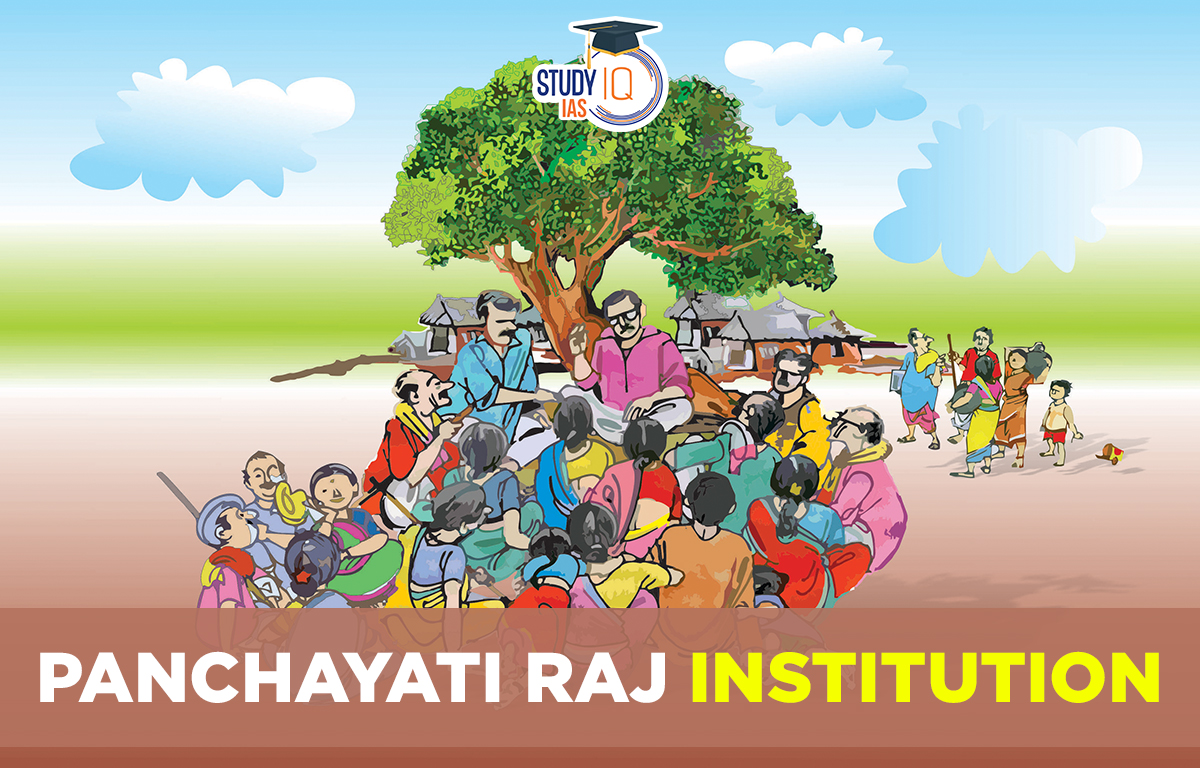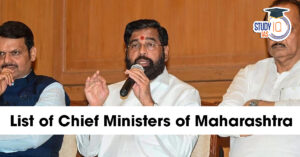Table of Contents
Context: In present days big shifts in both technology and society are threatening to make panchayats irrelevant.
Introduction of Panchayati Raj in India
- The Panchayati Raj Institution (PRI) in India was formally introduced through the 73rd Constitutional Amendment Act, 1992, which institutionalized a three-tier system of local governance in rural areas.
- Objective: To decentralize power and promote democratic self-governance at the grassroots
Key Features of the 73rd Amendment
- Three-tier system: Gram Panchayat (village level), Panchayat Samiti (block level), and Zilla Parishad (district level).
- Regular elections: Every five years to ensure continuity.
- Reservations: 50% of seats reserved for women, Scheduled Castes (SCs), and Scheduled Tribes (STs) to promote inclusivity.
- Devolution of powers: The Eleventh Schedule of the Constitution lists 29 subjects (e.g., agriculture, education, health, and rural development) to be managed by PRIs.
Successes of Panchayati Raj
- Massive Political Participation: Panchayat elections are now keenly contested, with over 3 million representatives elected, making it one of the world’s largest democratic participatory setups.
- Women’s Empowerment: Around 14 lakh elected women representatives (nearly 50%) are now part of local governance, ensuring gender inclusivity.
- Implementation of Social Sector Schemes: PRIs play a major role in implementing programs like MGNREGA (employment guarantee scheme), mid-day meal schemes, health and sanitation programs, and rural housing schemes.
- Strengthening of Local Leadership: Many grassroots leaders emerging from PRIs have moved on to higher political offices at the state and national levels.
- Improvement in Service Delivery: Areas with strong PRIs have witnessed better implementation of rural development projects related to roads, water supply, and public health.
Distress Factors of the Panchayati Raj System
- Decline in Public Participation: A decrease in public engagement in local governance.
- Overdependence on Centrally Sponsored Schemes: Many central government programs now bypass PRIs and directly deliver benefits to citizens (e.g., PM-KISAN cash transfer scheme).
- PRIs are reduced to implementation agencies rather than decision-making bodies.
- Plateau in Administrative Decentralization: State governments need to devolve staff and cede administrative control to local governments for effective functioning, but progress has stagnated.
- According to a 2022 report by the Ministry of Panchayati Raj, less than 20% of States have devolved all 29 subjects listed in the Eleventh Schedule of the Constitution.
- Reduced Fiscal Autonomy: Direct transfers to panchayats increased from ₹1.45 lakh crore under the Thirteenth Finance Commission (2010-15) to ₹2.36 lakh crore under the 15th Finance Commission (2021-26).
- However, there has been a significant reduction in untied grants, from 85% in the Thirteenth Finance Commission to 60% in the Fifteenth Finance Commission.
- Rapid Urbanization: India has experienced rapid urbanization, shifting the policy focus to cities and towns.
- In 1990, nearly three-quarters of India lived in rural areas, which has decreased to around 60% and continues to decline.
Evolution of Panchayati Raj System
The history of Panchayat Raj in India can be classified into various periods:
Vedic Era
- During the Vedic Era, the term “Panchayatan” referred to a group of five individuals that included a spiritual leader, but the inclusion of such a person gradually diminished.
- The Rigveda mentions Sabha, Samiti, and Vidatha as local self-governing bodies, which functioned as democratic units at the grassroots level.
- The king sought approval from these bodies for certain decisions and actions.
Epic Era (period of the Ramayana and Mahabharata)
- The Ramayana mentions that the administration was divided into two parts: Pur (city) and Janpad (village).
- Additionally, there was a Caste Panchayat in every state, and one member elected by the Caste Panchayat was included in the king’s Council of Ministers.
- The concept of self-governance in a village is mentioned in the ‘Shanti Parva’ of the Mahabharata, as well as in Manu Smriti and Kautilya’s Arthashastra.
- According to the Mahabharata, there were units of 10, 20, 100, and 1,000 village groups above the village level.
- The head official of a village was called the ‘Gramik‘, and the chief of ten villages was called ‘Dashap‘.
- The chiefs of 20, 100, and 1,000 villages were known as Vinshya Adhipati, Shat Gram Adhyaksha, and Shat Gram Pati, respectively.
- These officials were responsible for collecting local taxes and defending their villages.
Ancient Era
- During the Ancient Period, local self-governance was well-established in India.
- The town was called Pur and was governed by a Nagarik.
- Local bodies functioned independently, without interference from the monarchy.
- The headman, aided by a council of elders, continued to hold a prominent position in village life during the Mauryan, Post-Mauryan, and Gupta periods, although there were some changes in the official titles.
Medieval Era
- In the medieval period, the Sultans of Delhi divided their kingdom into provinces called ‘Vilayat’.
- The governance of a village was managed by three important officials – Mukkaddam for administration, Patwari for revenue collection, and Choudhrie for dispute settlement with the help of the Panch.
- The villages had sufficient power for self-governance in their territory. However, the caste system and feudalistic mode of governance under the Mughal rule gradually weakened the concept of self-government in villages.
- Women’s participation in the local village administration was absent even during the medieval period.
British Era
The British regime weakened the village panchayats in India. However, some initiatives were taken to sustain and restore local self-governing institutions in India which include:
- The Regulation of 1816: conferred judicial authority to the village panchayats in a few provinces. Under this Regulation, the Panchayats under the Madres Presidency were allowed to try cases if both the parties agreed to submit the dispute to the panchayat.
- Lord Mayo’s resolution of 1870: gave impetus to the development of local institutions by enlarging their powers and responsibilities.
- Bengal Village Chowkidary Act, 1870: empowered the District Magistrate to constitute a panchayat in any village if majority of the adult male residents apply in writing to the District Magistrate to constitute a panchayat in such village.
- The Resolution on Local Self Government 1882: It was Lord Ripon’s Resolution that intended to build local self-government institutions on the foundations of the local self-government system of ancient India and he designed them as an instrument of political and popular education.
- Morley Minto Reforms of 1909 incorporated the recommendations of the Royal Commission on Decentralization (1907) which led to the enlargement of the election process in the Local Self Government structure in India.
- Montagu Chelmsford reforms of 1919: Introduced a dyarchy system where responsibility of the local government was given to ministers and the ministers enacted several laws to revive the Panchayati raj institutions.
- Village Panchayat Act was also passed and made the panchayats a legal body.
- It established the village panchayat in many parts of the country and this continued up to 1940.
Post-Independence Era
- The post-independence period in India saw the inclusion of panchayats in the Constitution under Article 40 and the empowerment of state legislatures to legislate on matters relating to local self-government under Article 246.
- However, there was disagreement among decision-makers, including B.R. Ambedkar, regarding the inclusion of panchayats in the Constitution.
- As a result, the Directive Principles of State Policy included Article 40, which was not binding and did not lead to a uniform structure of panchayats throughout the country.
- Community Development Programme: To promote rural development, India launched the Community Development Programme (CDP) in 1952 with the participation of village panchayats.
- However, the CDP failed due to factors such as bureaucracy, lack of people’s participation, and lack of interest from local bodies, including panchayats.
- Balwant Rai Mehta Committee: The committee recommended a three-tier system of Panchayati Raj Institutions (PRIs) consisting of Grama Panchayats, Panchayat Samiti, and Zilla Parishad to promote democratic decentralization.
- Ashok Mehta Committee 1977: The committee led to new thinking on the concept and practice of Panchayati Raj. The committee recommended a two-tier structure consisting of Zilla Parishad and Mandal Panchayat.
- G.V.K Rao and L.M. Singhvi Committees: The G.V.K. Rao Committee recommended making the district the basic unit of planning and holding regular elections, while the L.M. Singhvi Committee recommended providing more financial resources and constitutional status to the panchayats.
- 73rd and 74th CAA: The Constitution (72nd Amendment) Bill, introduced during the Prime Ministership of P.V. Narasimha Rao in 1991, was a comprehensive amendment seeking to strengthen PRIs.
- The Constitution (73rd Amendment) Act and the Constitution (74th Amendment) Act were passed by Parliament in 1992, introducing local self-governance in rural and urban India.
- These acts came into force in 1993.
Significance of PRIs
- Political Consciousness: The PRIs have enabled a large number of people, especially women, to acquire leadership at the local level. This is because one-third of seats are reserved for women candidates. Thus, the PRIs have played a critical role in raising political consciousness among the masses.
- Strengthening Democratic Institutions and Processes: The experience gained by the new generation of leadership in democratic management has raised the quality of legislative debates and working of higher level institutions. PRIs provide opportunities for the circulation of political elite, which is essential for maintaining democratic forms in their true spirit.
- Planning and Development: PRIs have contributed significantly as units of planning and development at the district and lower levels. In several states such as Maharashtra, Karnataka, and West Bengal, local level planning has been successfully formulated and implemented by these institutions.
- Giving Voice to Local Demands: PRIs have become the connecting link between the Parliament and State Legislature on the one hand and local bodies on the other. The local members talk about the local needs, urgencies, and difficulties in implementation, whereas the members of Parliament and State Legislature can explain possible solutions. This two-way link has served the dual purpose of modifying state policies at the point of maladjustment and communicating the message from the centre and/or state to the remote corners of rural society.
- Executive Institution: PRIs carry out certain civic functions such as rural sanitation, public health, street lighting, drinking water supply, maintenance of village roads, culverts, and management of primary and secondary education.
- Breaking Hierarchies: PRIs have become a powerful tool where caste and local interests interact, clash, compromise, and arrive at a common understanding on various issues. Thus, they play a crucial role in breaking hierarchies and promoting social justice.
Challenges Faced by Panchayati Raj Institutions
- Insufficient Devolution of Power: While local government is a state subject, certain states have not devolved important subjects like fuel and fodder, non-conventional energy sources, rural electrification, non-formal education, small scale industries, technical training, and vocational education to PRIs. This limits their scope of work and effectiveness.
- Inadequate Grants and Funds: PRIs face financial constraints as the transfers made through State Finance Commissions are often meagre. Most GPs are also reluctant to raise their own sources of revenue, resulting in a lack of funds for carrying out their activities.
- Persistence of Patriarchal Attitudes: The issue of “Sarpanch Pati” or male relatives of female village heads wielding power and controlling decision-making processes continues to persist due to gender biases, women’s illiteracy, and patriarchal attitudes in society.
- Infrastructural Deficiencies: Some Gram Panchayats do not have their own buildings or lack basic facilities like toilets, drinking water, and electricity. Internet connections are also non-functional in many cases, causing delays in data entry and other processes.
- Lack of Support Staff: PRIs suffer from a severe lack of support staff, such as secretaries, junior engineers, computer operators, and data entry operators. This affects their functioning and delivery of services.
- Lack of Convergence of Government Programmes: There is a lack of coordination and convergence among various development programmes of the Centre and state governments. Different guidelines by different departments hinder the convergence of activities, resulting in a lack of synergy and duplication of efforts.
Ways to Revive the System
- New Vision for Panchayati Raj: Adopting a new perspective on panchayats beyond being mere last-mile delivery instruments for social sector schemes.
- Leveraging Technology: Using technology to deepen citizen engagement in local planning, decision-making, and accountability processes. A networked Panchayati Raj system could bridge the rural-urban divide by supporting safe internal migration.
- Focus on Water Conservation and Renewable Energy: Focusing the role of panchayats on enabling water conservation and renewable energy generation at scale 1. Panchayats can reclaim their role in managing common property resources by combining scientific practices, traditional knowledge, and public finances.
- Community-Based Disaster Risk Management: Panchayats can play a key role in implementing community-based disaster risk management programs, integrating early warning systems, disaster-resilient infrastructure, and capacity-building for residents.
- Reviving Local Governance: Reviving local governance in substantive terms, as a significant proportion of India’s population (94 crore people) still lives in villages, with over 45% engaged in agriculture.


 Phone-tapping in India, Legal Framework ...
Phone-tapping in India, Legal Framework ...
 List of Chief Ministers of Maharashtra F...
List of Chief Ministers of Maharashtra F...
 Indian Secularism: Constitutional Provis...
Indian Secularism: Constitutional Provis...





















